[imagebrowser id=422]
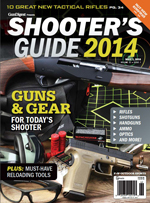 This photo gallery is an excerpt from the Gun Digest Shooter's Guide 2014, available for instant download right here!
This photo gallery is an excerpt from the Gun Digest Shooter's Guide 2014, available for instant download right here!
[imagebrowser id=422]
 This photo gallery is an excerpt from the Gun Digest Shooter's Guide 2014, available for instant download right here!
This photo gallery is an excerpt from the Gun Digest Shooter's Guide 2014, available for instant download right here!

As someone who tests and reviews guns for a variety of firearms periodicals, I’ve had the opportunity to test versions of both the gas impingement and piston-driven ARs. Here are my factual discoveries:
1. Piston-driven guns run much cleaner. Fire a 30-round magazine through a piston-driven AR and it will look just as clean afterwards as it did before you fired it.
2. Piston-driven guns run much cooler. You’ll have to shoot about 100 rounds through a piston gun and a gas gun to really feel the difference, but it is there.
3. On average, piston-driven guns are less accurate. This does not mean piston-driven ARs are inaccurate, but, looking over my test records, the most accurate ARs I’ve tested have been those that work with the gas impingement system.
4. On average, piston-driven guns cost more. This observation must be qualified with “it depends.” There are some very expensive gas impingement ARs and some piston-driven ARs that are not all that expensive. However, if you want to purchase the least expensive AR possible, it will be a gas impingement gun.
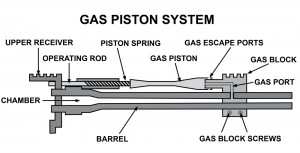
5. If you intend to run a suppressor on your AR, it has been my experience that the gas impingement guns are more suppressor-friendly, especially those with an adjustable gas block that allows you to control the amount of gas directed back through the gas tube.
6. Both piston-driven and gas impingement guns are very reliable. If, by magic, you inserted me in the pages of Bryce Towsley’s book The 14th Reinstated and I had to live through a social and economic collapse where there were roving bands of marauders, and if you told me I had to pick between a gas impingement or a piston-driven AR, I really would not care which one I ended up with. Except for three things: parts for gas impingement ARs are easier to find, much more plentiful, and less expensive.
Now, here’s the good news. The unmatched modularity of the AR allows you to, in a way, have your cake and eat it, too. If you own a gas impingement AR and want to try a piston-driven AR, just purchase a piston-driven upper receiver. Since the gas impingement and piston systems work independently of the lower receiver, you can alternate between both on the same lower receiver.

From the time cartridges were invented in the 19th century, cast lead bullets were the projectile of choice. Many rifles and handguns were sold with an appropriate caliber bullet mould as part of the kit, so the shooter could have a ready supply of ammunition on hand.
Revolvers generally shot either round balls or round nosed bullets, while the rifleman had a wider choice of bullet shapes and weights. When copper jacketed projectiles hit the scene, in the late 1880s, they revolutionized the shooting world. They gave unprecedented penetration, fouled the bore much less than their lead counterparts, and were accepted as the projectile of the future.
However, there were those who still enjoyed the process of casting their own lead projectiles, whether due to financial constraints or old habits. The cast lead bullet, especially among handgunners and those who enjoy shooting the blackpowder cartridges that were developed early on, has never lost favor.
Whether greased, lubricated or paper patched, the cast lead projectile remains with us in the 21st century. And in the situation we shooters have faced since the beginning of 2013, that is a very good thing. I know trying to find certain ammunition, or even components, is damned near impossible. This is where the cast lead bullet can save the day.
The method of casting your own bullets is still viable. Lyman, Lee, RCBS and other companies make great bullet moulds that allow us reloaders to cast our own bullets.
Lead is generally soft, so adding some antimony (often found in wheel weights) can make your alloy harder. If you choose to melt some lead and roll your own, let me warn you that lead fumes can be very harmful. Be sure and melt your lead outdoors in a well ventilated area.
Get the mould good and hot before trying to pour lead into the cavity, to avoid “frosted” bullets. I still cast my own lead bullets and round balls for my .54 caliber muzzleloader, as well as .357 and .45 bullets for my handguns. They make a very economical choice, and casting bullets is a fun activity when there’s no open hunting season. I’d recommend a good electric melting pot, as trying to melt lead over an open fire can be pain.
There are companies who specialize in making cast bullets, and make some wonderful stuff. Meister Bullets and Falcon Bullet Company come to mind quickly. Good, consistent lead bullets can make for a great weekend spent with your favorite pistol. Falcon makes a .45 caliber 230 grain round nose that is perfect in the .45ACP. It feeds well and it’s accurate, and it’s much more affordable than the jacketed stuff. My .38 Special really likes the Falcon 158 grain semi-wadcutter, despite the 1 7/8” snub nose barrel.
Rifles, too, can benefit from cast lead bullets. The traditional “cowboy” era guns were designed for them. The .45/70, .38-55 Winchester, and .30/30 Winchester all perform very well with cast lead bullets. Their moderate velocities mate up very well with these projectiles.
Single shot black powder cartridges do as well. My .45/120 Sharps loves the Montana Bullet Works swaged 500 grain bullets. Huge clouds of sulphur smelling smoke and some hefty recoil makes for a fun afternoon!
Cowboy guns aside, there are good bullets to be made or purchased in any rifle caliber. I firmly believe every serious handloader should own one or more editions of the Lyman reloading manual. Having no particular allegiance to any brand of bullet, Lyman tests with a wide variety of projectiles, and this makes a valuable source of cross-sectional test data. More importantly, Lyman includes the loading data for cast bullets in every caliber capable of shooting them.

This gives the reloader the opportunity to not only create a good amount of practice ammunition, but he or she can create a reduced velocity load to help introduce new shooters to a centerfire rifle without the punishing recoil. You see, lead bullets cannot be pushed to the same velocities that copper jacketed bullets can, and that Lyman manual will give you the information needed to produce those cast lead loads that will perform well at lower velocities. These loads can be used for plinking, or for hunting in close range situations.
So, whether it may be your favorite pistol that needs feeding, or you’d like to spend some time at the shooting bench with a favorite rifle firing ammunition that is considerably cheaper to make, cast lead bullets can serve you well.
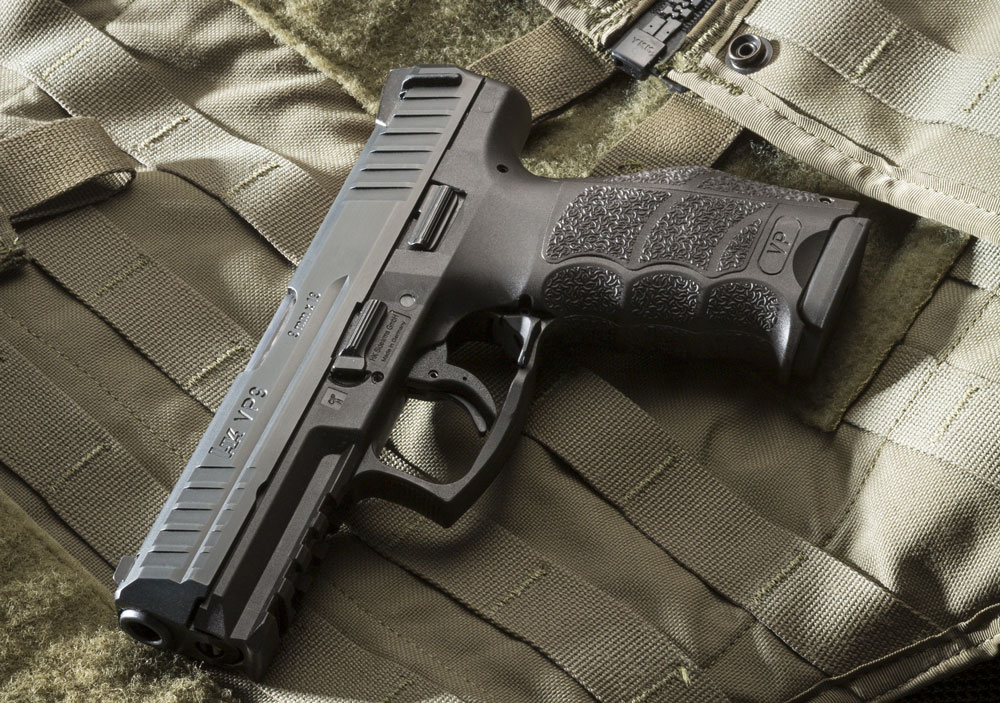
When it comes to striker-fired pistols, Heckler & Koch has moved at its own pace.
The German manufacturer was at the forefront in producing the style of pistol when it was gaining steam in the early 1980s. But since the introduction of its VP70- and P7-series, H&K has been quite when it comes to striker-fired.
That is until recently. Heckler & Koch has gotten back into the striker-fired pistol market in a big way with the recent introduction of the VP9.
The striking feature of the new 9mm pistol is the amount of time Heckler & Koch dedicated to the product. It has been reported, the company invested four years in designing the handgun, integrating a number features H&K has become known for including on its guns.
Some of those features include interchangeable grip panels to help the pistol comfortably adjust to nearly any hand, ambidextrous controls for the magazine release and slide lever, and Picatinny rails to simplify the addition of accessories.
The VP9 accepts the same 10- and 15-round magazines as the P30, while still cutting a slim profile. The pistol is 7.34 inches in length, 5.41 inches in height and weighs 26.56 ounces empty.
The VP9 boasts a 4.09 cold hammer-forged barrel, which is outfitted with a six-groove 1:9 twist polygonal bore profile. The handgun has a carbon-nitride finished steel slide that is cut with aggressive fore and aft cocking serrations.
The pistol’s trigger is tuned for a snappy 5.4-pound pull and has been designed to reduce pre-travel. Like most striker-fired handguns, the VP9 has a blade safety on its trigger.
Other safety features include a firing-pin block, a passive system that helps prevent a negligent discharge if the gun is dropped. It also has a cocking indicator on the rear of the slide and its extractor also functions as a loaded chamber indicator.
Heckler & Koch as put the MSRP of the VP9 at $719, placing it near the high end of many striker fire pistols already on the market.
Gun Digest the Magazine is the source for firearms news, pricing and guns for sale. With a subscription to Gun Digest the Magazine, readers benefit from in-depth editorial expert advice, show reviews, how-to instructions and Second Amendment issues.
 Inside This Issue:
Inside This Issue:Click here to start a subscription to Gun Digest. A digital download of the individual issue is also available.
Did you receive a suspicious subscription offer? A bogus company is sending out Gun Digest the Magazine subscription scams.
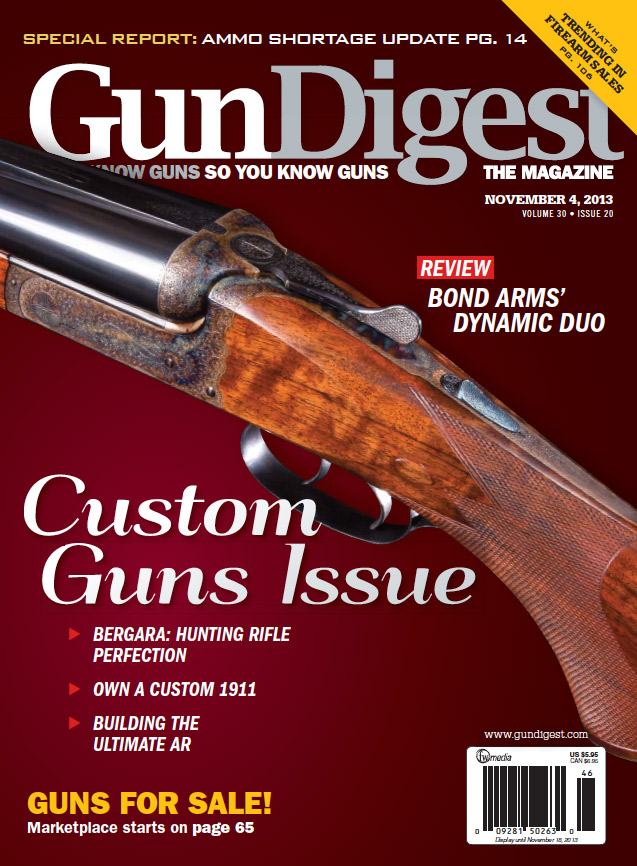 Recommended: Looking for digital back-issues of Gun Digest the Magazine? Click here
Recommended: Looking for digital back-issues of Gun Digest the Magazine? Click here
– Instant Downloads
– PDF format
– More great gun reviews and articles!
Anybody who has spent any time behind the business end of a gun understands that trigger discipline is one of shooting's most persistent bugaboos.
While the kinetics behind a crisp, clean trigger pull and the subsequent reset are as simple as pie it is easy to fall back into old, bad habits. Rushing the trigger pull or flinching in anticipation of the firearm's recoil are mistakes that can come back to haunt even the most seasoned shooter. Dry fire practice is one of the easiest (and cheapest) ways to hone consistent trigger discipline, but in the above video Adam Painchaud adds a twist to practicing without sending a round down range.
Basically, all the instructor from New Hampshire's SIG Sauer Academy is doing is mixing dry fire with live fire in an effort to expose trigger pull and other shooting missteps. Simple as the drill may appear, it really tends to pull the curtain back on mistakes. And there are a couple of nice aspects to this shooting drill.
First off, this drill is part practice, part diagnostics; not only does it help shooters develop proper mechanics, it also helps them figure out where the hangups are in the first place. Next, it is a drill that can be executed at nearly any shooting range. While some facilities won't allow shooters to draw, there are few (maybe none) that are going to frown upon dry firing. Finally, this is a drill that can be done alone, which makes it easy to slip into any training routine.
The one drawback of the drill is it allows for anticipation; shooters know the next shot will be dry, in turn they will consciously attempt to produce a mechanically sound trigger pull. There are a couple of variations of the drill meant to overcome this and force shooters to remain sound on each trigger pull. The first is to have a shooting partner load the gun either with or without a bullet chambered. The second, is to load one or two snap caps in with the live rounds. Both force the shooter to stress mechanics and accentuates any missteps they might be taking.
There's no arguing the shooting range is for shooting. But by mixing in a little dry fire, shooters might find their live-fire time becoming more fruitful.
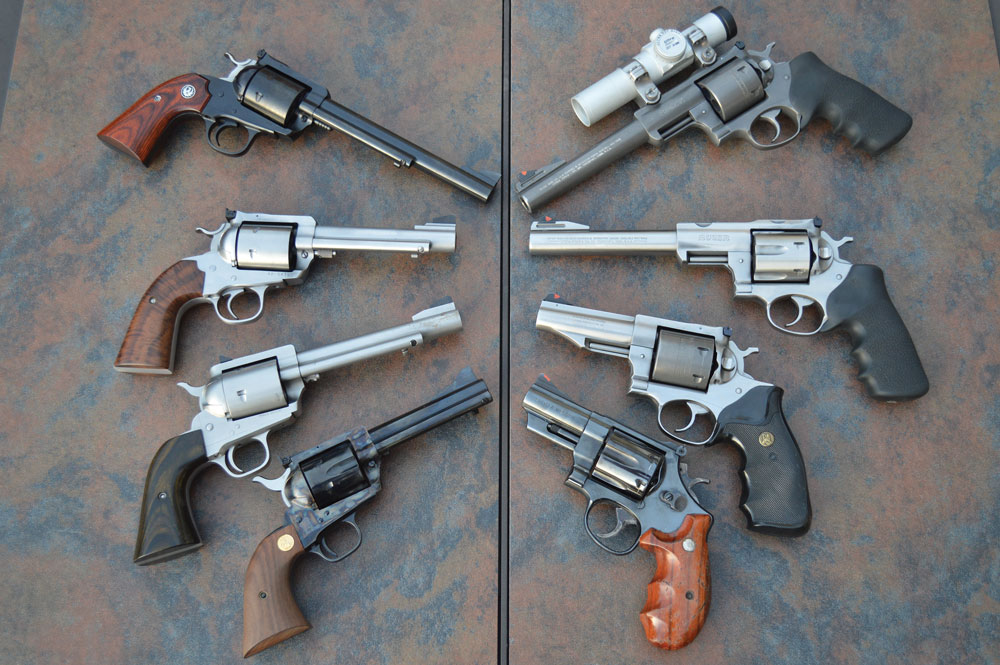
Single actions derive their name from the fact that they can only be fired by cocking the hammer and squeezing the trigger one shot at a time, whereas the double action can be fired in the same manner as the single action or simply by squeezing the trigger to fire – hence “double action.”
All modern day single-action revolvers are based, however loosely, on the Colt Single Action Army (SAA). So timeless was the design that it is still in wide use today. There are a number of manufacturers of single-action revolvers, including Ruger, Freedom Arms, Magnum Research, Uberti and Colt.
Double-action revolvers are available from Smith & Wesson, Colt, Ruger and Taurus on the new and used markets. Colt’s excellent Anaconda is no longer in production, but it can be found used and makes for an excellent choice for hunting or as a back-up weapon.
Both types of revolvers can be chambered in calibers adequate for big-game hunting and protective back-up duty, but they handle recoil differently. Double actions tend to transfer all of their recoil straight back into the web of your hand, while single actions have a propensity to exhibit barrel rise and are designed to roll upward (particularly in the case of single actions equipped with “plow handle”-type grips).

Before the decision can be made, you will need to define the intended purpose of the revolver. Is this revolver going to be used as backup? Or is the revolver going to be employed as a primary hunting tool, possibly doubling as backup?
Why is this important? Simply because a primary hunting handgun can be fitted with a longer barrel than one that will strictly be used as a back-up revolver, and it might be sporting an optic like a scope or red dot-type sight. A revolver that is intended only for back-up duty may ride on your belt for years without ever being drawn and used, so it probably won’t have a very long barrel or an optic mounted up top, with more of a nod towards comfortable carry.
The external finish of the revolver is also something to consider when choosing. If the revolver will spend more time riding in a holster on your belt as backup, stainless steel may be the most durable finish. Not only does bluing typically wear off in a holster from rubbing, it is more vulnerable to rust when exposed to the elements—something to consider. Your local weather should also be a factor in helping you decide.
In the case of back-up work, a double-action revolver offers a couple of distinct advantages over its single-action counterpart, to include the ability to fire by simply pulling the trigger without pulling the hammer back, and the ability to open the cylinder and load and unload more easily compared to a single-action revolver where one round at a time can be loaded and unloaded.
Oddly enough, many who have double-action revolvers don’t shoot them double action (I would fall into this category of shooter). This sort of negates that “advantage” a bit.
That being said, I would rather have a double-action revolver if trapped underneath an animal trying to make a meal of me, as that advantage would surely become more than pronounced. As mentioned, the other advantage the double action holds over the single action is the ability to load and unload a cylinder at a much faster rate. Of course this virtue is only an advantage if one is in a situation where a speedy reload is necessary. I have yet to experience this need in the field.

Caliber choice in this discussion is a moot point as either configuration, as mentioned before, can be chambered in a significantly powerful caliber. I suggest that if hunting big game with a revolver, or carrying one in bear country for protection, one should choose the biggest caliber they can accurately shoot without a flinch or fear of recoil. I like to think of the .44 Magnum as the minimum reliable caliber and it is a good choice particularly if you do not reload, as there is an abundance of available factory ammunition for the popular caliber.
The old warhorse .45 Colt is perhaps the most overlooked, probably due to the rather weak factory load offerings (due to the many old .45 Colts that are in circulation). Loaded to its potential in a modern firearm (from Ruger, Freedom Arms or Magnum Research), there is little the .45 Colt cannot tackle, and some specialty ammo manufacturers offer modern, higher pressure .45 Colt loads like Grizzly Cartridge, Buffalo Bore Ammunition and Double Tap Ammunition.
You have two platforms to consider when choosing your revolver. My suggestion would be to first define its use, and second, figure out which one you can shoot the best. This is the one that will inevitably be the most comfortable in your hand and the one that will inspire the most confidence. There is no substitute for actually doing a side-by-side comparison to best help you in making this critical decision. I must confess that I like both, but I have found (for me) that the single action points more intuitively. They both have their advantages and disadvantages, but both will do the job reliably.
Editor's note, this article appeared in the February 13, 2014 edition of Gun Digest the Magazine.
There are plenty of shooters out there with impressive skill sets. But there are few who can wow the crowd as consistently as Jerry Miculek.
It seems like anytime the top competitive shooter and holder of a number of records picks up a gun he drops jaws. And it doesn't matter what type of firearm it is either. Handgun, shotgun or rifle, Miculeck will make it sing.
In the above video, the ace is at it again, this time strutting his stuff with his trusty Smith & Wesson M&P15. He pits his AR shooting skills against a whole array of fruit: An orange, apple and even a grape. For those who know and appreciate Mr. Miculek's work, the fact he slices and dices this produce will come as no surprise – given he is around 10- to 15-yards out. But he adds one heck of a twist to make this trick still raise eyebrows.
How fast do you think you can you acquire a grape-sized target and send a round dead center from low ready with the safety on? Well, in Miculek's case the feat can be accomplished in around one-half second. That's pretty dang quick.
Miculek's speed, however, does little to knock off his accuracy. Pay attention to the slow-motion, close-up shots shown after he destroys each piece of fruit; Miculek is nearly dead center on each one of his targets.
This video is impressive as almost every one Mr. Miculek's has turned out before it. And as always, there is only one thing to say after watching this guy sling copper-jacketed lead – Dang Jerry!
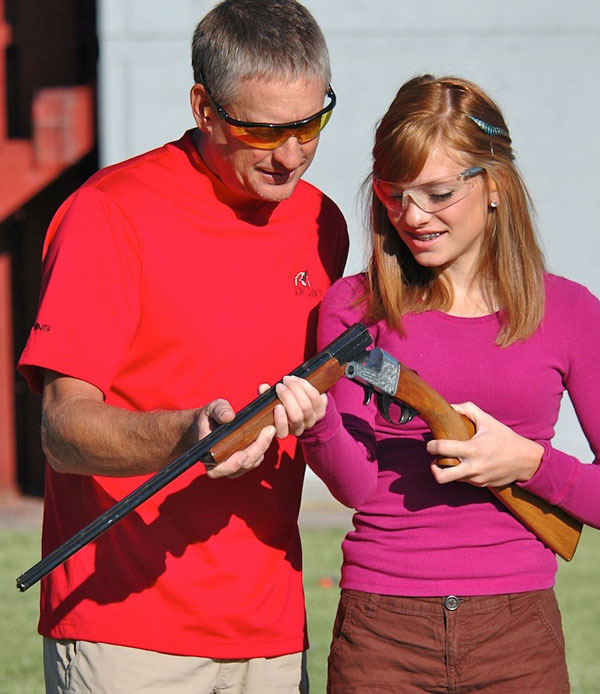 Times have changed and passing on the love of shooting and firearms is no longer strictly the domain of fathers.
Times have changed and passing on the love of shooting and firearms is no longer strictly the domain of fathers.
Luckily, the shooting world has seen more and more mothers, uncles, aunts, friends and colleagues share their passion for firearms to those close to them. But to be sure, fathers remain one of main conduits for passing firearms knowledge on, be it to their sons or daughters.
How about you? Did your pop help you get behind the trigger? How did your dad get you or keep shooting? What was the best shooting tip he ever gave you?
In celebration of Father’s Day (June 15), we would love to hear how your dad influenced you as a gun owner? Give us your best shooting, hunting or firearms story involving your dad below in the comments. We may use some of them in an u
There is no better gift you can give any dad for Father's Day than letting the world know how they influence your life and shared a passion with you.
For nearly 7 decades, Gun Digest 2015 has been regarded by the shooting industry, hunters, competitive shooters, collectors, and hobbyists everywhere as the shooter's No. 1 resource. In our 2015 69th Edition, Jerry Lee again helps us carry on the tradition of being the gun book every firearms lover turns to.

It is no secret at this point that one of the allures of the AR is the ability to customize the firearm.
Shooters can switch out and swap nearly every part of the rifle, from its flash suppressor to its fire control. In a certain respect, it is a way gun owners can make a rifle truly their own.
Stag Arms is taking the concept of creating a firearm unique to its owner a step further than just accessory upgrades and swaps. The prolific AR manufacturer recently announced it is expanding its design choices for laser engraving on the magazine well of its rifles and lowers.
The Connecticut-based company is now offering the American flag and the Gadsden rattlesnake on the magwell of its lowers. The expansion was sparked by the popularity of the company's original engraving, the text of the second amendment. No matter the choice, the engravings are fairly affordable perks, adding only $15 to a rifle's overall price tag.
Unfortunately, those who already own Stag rifles will have to plan on buying a new one if they want something splashed across the side of their firearm. The option is only available on new guns, ordered directly from the company.
Stag Arms is one of the larger company’s to embrace engraving, but it is far from the only one. A number of smaller manufacturers have turned a lot of heads with some of the graphics they are putting on rifles.
York Arms, for instance, offers pretty extensive engraving choices, etching nearly any non-copyright image on a magwell. It, and other companies, also offer custom serial numbers for their receivers and selector markings.
As any fool knows, an engraved lower receiver isn’t going to make a rifle or its owner any more accurate. But making a firearm unique, is is definitely an option that is on target.
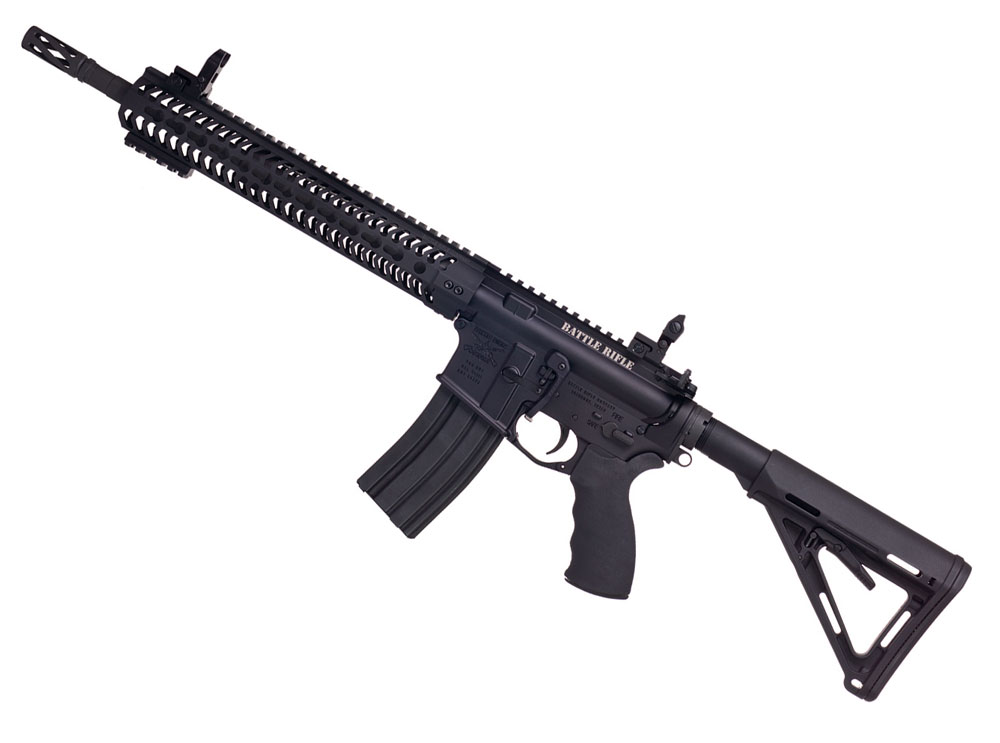
Gun makers teaming up to whip out a new firearm is nothing new. Take Germany’s Mauser and Britain’s Rigby, for instance.
The iconic gun companies have and still do bang out some of the world’s top big-game rifles. Mauser provides its renowned magnum action, Rigby the stock, barrel and the rest of the rifle.
The perks of a join venture have not been lost on modern day manufacturers. And one of the most recent alliances has tackled a daunting task – creating a unique, but affordable AR carbine.
Time and shooters will eventually tell weather or not the Battle Rifle Company and Odin Works have succeeded. But at first blush, the companies’ BR4 Odin Rifle sure looks to fit the bill.
The key component Odin has supplied the AR carbine is its 12.5-inch keymod rail. The rail greatly expands the versatility of the rifle, allowing nearly infinite accessory configurations.
The rest of the firearm is built by the Battle Rifle Company and is based off its BR4 rifle. The designation is what the manufacturer gives all its guns with a 16-inch or shorter barrels.
The BR4 Odin is available in two of the more popular AR calibers, .223/5.56mm and .300 Blackout. Both barrels are 14.5-inches in length and are topped off with Battle Rifle Company’s flash suppressor.
The smaller-caliber barrel is chrome lined and has a 1:7 twist rate. It is also cryogenically treated, a finishing process where the barrel is dropped to sub-zero temperatures in an effort to create a more homogeneous structure in the metal.
The .300 Blackout barrel is outfitted with a 1:8 twist rate and comes with a nitride finish, which helps reduce wear and corrosion.
The rifle is available with a mid-length gas port and comes standard with a number of top-notch accessories. The BR4 Odin has a collapsible Magpul stock, comes with an extended trigger guard, is outfitted with B.A.D. lever for the magazine release and has a single-point sling adapter.
Battle Rifle Company has also made a number of other accessories available for the rifle, including a 13-slot rail and flashlight holder. These features, however, are sold separately from the base rifle.
The BR4 Odin is billed as Battle Rifle Company’s premium carbine, but it shouldn’t break the bank with a MSRP of $1,495. If it shoots as good as it looks, the companies' teamwork might have produced a win.

A fellow retired cop buddy recently asked me if I still carry every day after all these years. “Yep,” I replied, “Murphy’s law of inverse proportion still applies.” (The probability of an event increases in direct proportion to your lack of preparation for it.) Let me give you an example.
I was going for a quick little errand on my Harley recently when I decided to leave my gun home due to the hot weather. I passed a local park with a vehicle parking area elevated above a busy playground and, out of the corner of my eye, saw a guy open his trunk, take out a scoped rifle and get back in his car with it.
In cop vernacular, that was an official “Oh S—!” moment.
I positioned myself and the bike uphill behind the subject (still in his car), got dispatch on the cell phone and gave them, in this order; situation, location, description of the vehicle, description of the subject and description of me and then stayed on the phone with dispatch while keeping eyes on the subject. (I figured if he started to set up on the kids, a fifteen-hundred pound Harley made a pretty good impact weapon.)
Three units arrived. The officers made a professional approach, guns at high-ready and proned the guy out. I stayed back and let them do their thing. (Don’t ever approach officers who have their guns drawn or you will instantly become part of the problem.)
It seems he was just a regular guy with no priors — and no smarts — who'd bought an air rifle and couldn’t wait to get it home to take a look at it. After they sent him on his way with a stern admonition the cops came over and thanked me for “dropping a dime” as we spent a minute or so admiring the Harley. Then they left and we all went about our business.
Now, what would I have done had I been packing my pistol? Exactly the same thing.
That's right. This dufus never presented a lethal threat to anybody and being stupid is not a capital offense. I would have begun my response exactly the same way with a “suspicious circumstances” call for uniformed officers.
If he threatened the kids directly prior to the arrival of the cavalry and I had to take action, at least they would know my physical description as the “good guy.” I would have made a stealthy approach (to neutralize the distance advantage of his rifle) got him at gunpoint and commanded him to drop his weapon.
But I wasn’t armed. And so I got lucky. This time.
Lesson learned? Carry every day — or just as sure as I write these words sooner or later Murphy’s gonna get ya!
Editor’s Note: Got a question for Joseph Terry about concealed carry not covered here? Log in and post your question in the comments below.
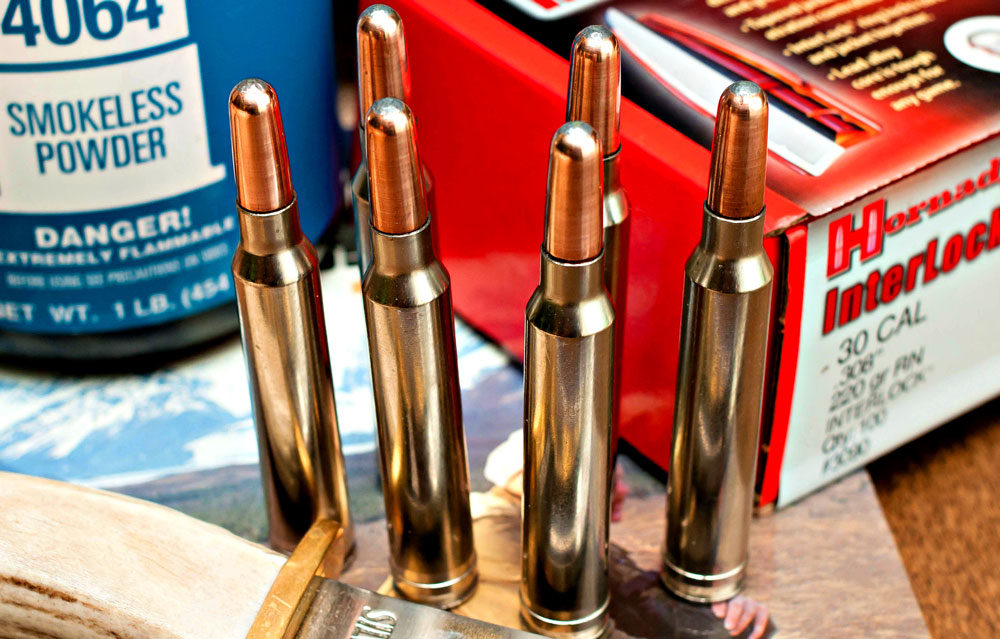
In my native state of New York, we have a wide variety of hunting situations. Some of us hunt the wide open farm fields, or the cut power lines, where the occasional shot can exceed 300 yards. But, most of us are woods hunters, be it the hardwoods of the Hudson and Mohawk Valleys, or the beech and conifer woods of the Catskills and Adirondacks.
The average shot in the latter situation rarely exceeds 125 yards, and I can count on one hand the deer in the woods that I’ve shot at over 175 yards. Within this range, I’ve found that the round nosed rifle bullets can really shine.
Not that I don’t love and frequently use spitzer and spitzer boat tail bullets; they’re definitely accurate and perform just fine. But, in my experiences, round nose bullets have a different impact upon game. They seem to hit harder, and I can see the visual effect of the bullet impact when it strikes an animal.
Long and short of it: I’m a huge fan. As a handloader, I load these bullets with a couple ideas in mind.
One, they aren’t the ideal long range load. When I use them, I zero my rifle at 200 yards, and mentally prepare to stay within that range in the field. After that range the spitzers retain their energy much better, and have a flatter trajectory. But as I’ve said, most of my shots here at home are on the short side, so trajectory doesn’t really become an issue. If I can keep the three shot groups to within one minute-of-angle, or thereabout, I’ve got all the accuracy I need for hunting New York’s wild places.
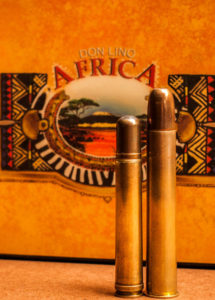
Two, I really like the way the round nose bullets seat in the cartridge cases. They keep their weight forward, and in comparison to the boat tail spitzers, they are much shorter for the same weight of bullet. This means the loader doesn’t have as much trouble with the compressed loads that can be associated with the longer bullets, especially the monometal bullets, like a Hornady GMX or a Barnes TSX.
I especially like the heavy for caliber round nosed bullets. A 160 grain 6.5mm, 150 grain .270, 175 grain 7mm, 180 and 220 grain .308 and 250 grain .358 bullets make a great choice for the deer hunter, especially if you hunt deer in an area where black bear share the same habitat. They have a high sectional density, penetrate wonderfully, and hit like a sledgehammer.
Speaking of black bear, if you enjoy the spring season over bait, like my neighbors in Quebec offer, the round nosed bullets make a great choice. Ranges are more than likely less than 75 yards, and the round nose bullet will help settle the argument quickly without having your bear wander off into the willow thickets where shooting ranges can be measured in feet instead of yards. No one wants to dig a bear out of that stuff!
Another point of interest is that when compared to the many of the premium bullets available today (and they are wonderful!) the old fashioned round nose bullets are more affordable. And, perhaps because they are not “in fashion” they are often in stock, which, in today’s market of component unavailability is a very good thing.

My pal Jeff Koonz, who owns our local gun shop, Coxsackie Gun & Bows, often chats with me about our favorite rifle loads. Jeff has the good fortune to be able to choose just about any rifle he wants, yet he chooses cartridges and loads similar to one I’ve described. He and I believe in the Elmer Keith “heavy and slow” mentality for our close shooting distances in New York.
Many of his customers look at us funny, but I’m sure we know what we’re talking about… Jeff is a proponent of the .35s; he loves the underrated .358 Winchester and often uses his .350 Remington Magnum. He also enjoys the venerable .45/70 Government, and all of those calibers make good use of the round nose bullets.
I like to load my round nose bullets to moderate velocities, and I’ve found that they perform best between 2,300 and 2,600 feet per second. A Hudson Valley eleven point buck fell to a 220 grain round nose from my .300 Winchester Magnum in the fall of 2011, handloaded to 2,425 feet per second, and he went down like he was pole-axed!
Get yourself some round nosed bullets for your favorite deer rifle, load ‘em up and see for yourself if they don’t work well. Cheers!

Like your rifle, magazines need to be maintained and cleaned for optimal performance and life. Make it a habit whenever field stripping and cleaning your rifle to also clean whatever magazines you’ve been shooting with as well. Here are 6 simple steps to AR-15 mag disassembly and cleaning.
1. Check that the magazine is empty.
2. Turn the mag over and using a small punch, depress the catch through the small hole in the floor plate and slide it back to release the plate.
3. Carefully slide the floor plate free of the magazine while keeping the mag spring retained. Then, gently allow the spring to uncoil and remove it.
4. Pull the follower from the magazine.
5. Now you can scrub the magazine parts down with the same brush and solvent you used for cleaning your rifle, but the easiest way is to simply place them in the dishwasher. Whether an aluminum or polymer mag, just place the parts in the silverware holders in the dishwasher and the mag box in the top rack. Set the washer on the pots and pans cycle so they get hot and dry. Spray the spring with a silicone-based spray so it does not collect dirt. If you note any defects that could hamper the mag’s operation, throw the whole magazine away and get a new one.
6. To reassemble, slide the follower in the bottom of the box, followed by the spring and the floor plate. Slide it forward until it snaps into the locked position and make sure the floor plate stiffly depresses and springs back into place.
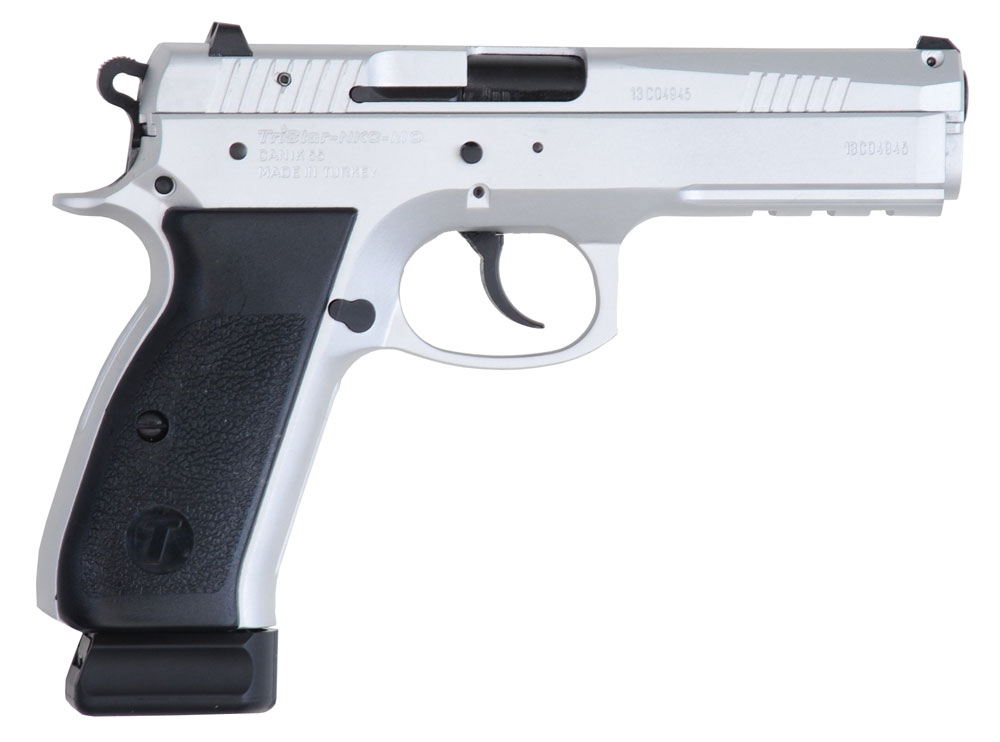
TriStar’s latest addition to its ever-growing pistol lineup is enough to spark a case of déjà vu. One glimpse at the P-120 is certain to elicit the feeling you’ve seen this handgun someplace else.
Chances are you have, but it was in the original iteration of the single-, double-action pistol – the CZ 75. Since the handgun from the Czech Republic was introduced more than a quarter century ago, its reliability and usability has spawned plenty of fans and imitators.
TriStar has teamed up with one of the most lauded manufacturers of CZ clones to import the P-120 to America. The Turkey-based Canik 55 is a NATO-certified small-arms manufacturer who has become a major supplier for European militaries and law-enforcement agencies.
The P-120 offers shooters an affordable full-sized steel-framed 9mm pistol that does not break the bank. While the gun is light on the price tag, it isn’t on features. The P-120 comes with nearly all the bells and whistles you’d expect out of a much more expensive gun.
Perhaps the gun's biggest attention getter is its relatively light weight. Unloaded, the pistol weighs in just a shade less than two pounds, tipping the scales at 30 ounces. This makes the P-120 walk a thin line as a personal-defense weapon.
The pistol is certainly within the appropriate weight limits for many concealed carry patrons. Perhaps the only modification that might be needed by some is a heavy-duty belt. But for others, the P-120 might be too much to tote around on a daily basis and would be better – like many full-sized pistols – finding a home in a nightstand.
The gun’s weight, along with its 4.7-inch barrel has the potential to make the P-120 a pleasant gun to shoot. The mass of the pistol should be enough to reduce recoil and muzzle flip, while its barrel length is conducive to producing tight groups. As an added bonus, the six lands-and-groove rifled barrel also opens ammunition options, as it is compatible with lead and jacketed bullets.
The P-120 boasts an extended beavertail to protect the shooter’s hand from the hammer. And it comes outfitted with deeply textured polymer grips, making the gun easily manageable. This is an asset when the much heavier double-action is utilized.
As to be expected, the 19-round pistol has been reported to have a rather large difference between single- and double-action trigger pulls. With the hammer down, the trigger pull comes in around the 10-pound mark; cocked, the gun’s trigger pull drops to around five pounds. The pistol has a three-dot sight system with the front pinned and the rear drift adjustable.
While the gun has many features that have the potential to win many shooters over, it could hit a wall with dedicated southpaws. The gun is not designed to be ambidextrous with all of its controls – thumb safety, magazine release, slide release – all situated on the left side.
The P-120 has fore and aft cocking serrations making it easier to manipulate, no matter the situation. It is available in black or chrome and comes with a Cerakote finish. This feature, along with chrome-plated internal parts, helps make the gun impervious to the elements.
If the intrinsic elements of the pistol are not enough to sell shooters, TriStar has thrown in plenty of perks. The P-120 comes in a hard, protective case with form-fitting foam. The gun is shipped with a basic cleaning kit and comes with two 19-round Mec-Gar magazines. It also comes with a lock and magazine loading aid, to boot.
The P-120’s most intriguing aspect, however, is its price. Presently, the handgun's MSRP is $489 for the black finished model and $509 for the chrome. This is right around $100 less than the CZ 75’s present MSRP.
The P-120 looks to have everything a shooter might want in a steel-framed gun. And at the price, TriStar has given few reasons why shooter couldn’t add one to their gun cabinet.
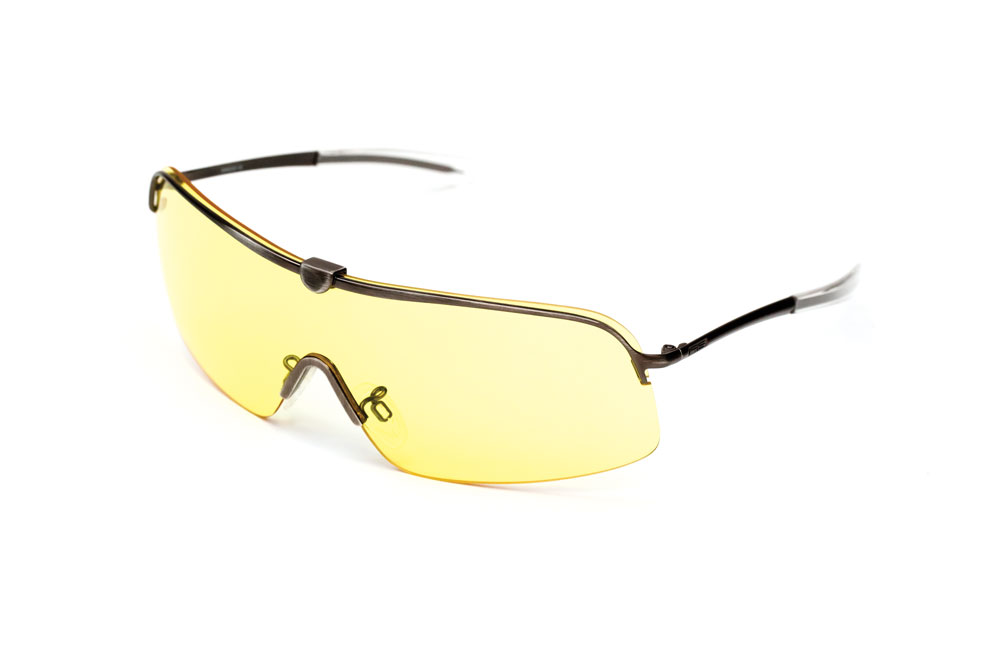 Like an F-16 Fighting Falcon
Like an F-16 Fighting Falcon
Just like its namesake—the American F-16 Fighting Falcon jet, known for having a cockpit with an exceptional field of view—Randolph Engineering’s “Falcon” lens/shield design allows shooters an exceptional view of their targets with remarkable optical clarity. Lightweight, durable and stylish, the Falcon is sold as a kit with a frame and three lenses, and comes in small (64mm) and medium/large (72mm) sizes. Frame color options include matte black or brushed pewter, and available lens tints are medium yellow (shown), dark purple and “HD,” the latter being interchangeable shield lenses with built-in nosepieces. The Falcon comes with a lifetime warranty on all solder joints assuming normal use. ($349; randolphusa.com)
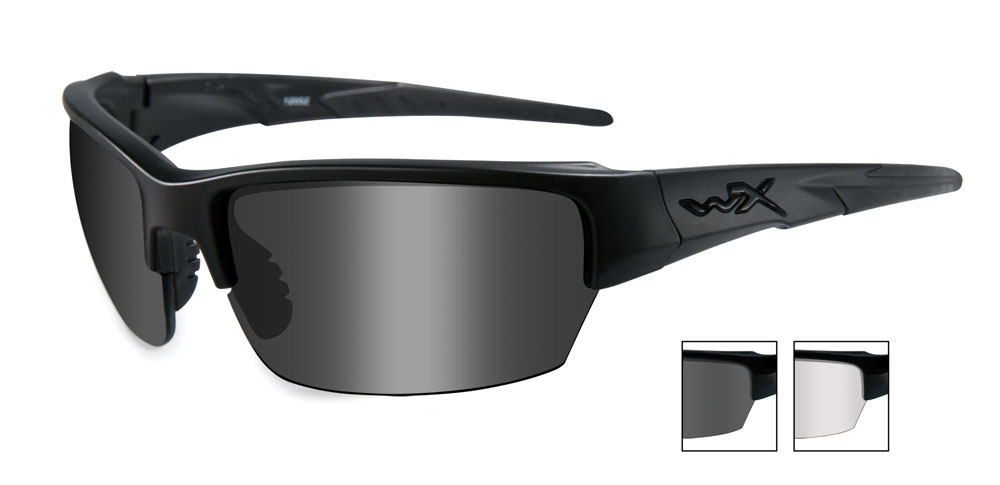 Meets Impact Safety Standards
Meets Impact Safety Standards
A two-lens interchangeable shooting glasses system, the Wiley X “Saint” model comes with smoke-grey (shown) and clear lenses, as well as a matte-black frame. The glasses meet stringent ANSI Z87 High Mass and High Velocity impact safety standards. The High Mass standard means the frames and lenses must withstand the weight of a 1.1-pound pointed projectile dropped from a height of 50 inches, and the High Velocity Impact standard dictates that the frames and lenses must withstand the impact of 20 shots at different angles with a .2-inch-diameter steel ball fired at 150-160 fps. Other optical requirements include 100 percent UV protection, refractive power standards and prismatic evaluations. It meets the Mil-Spec standard for combat protective eyewear. Sizes are small and medium. ($85; wileyx.com)
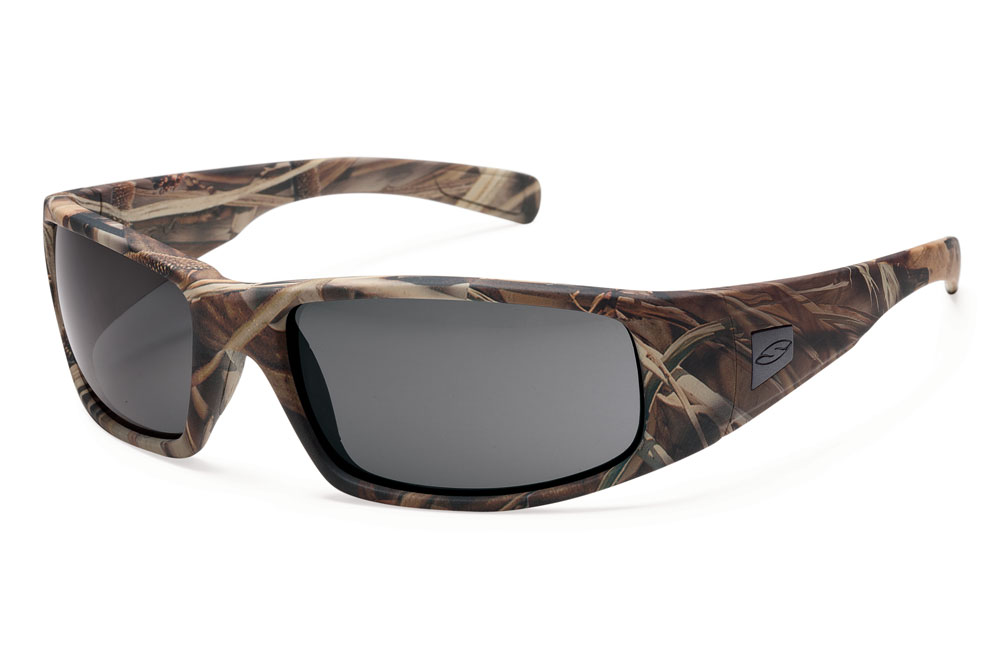 Tapered Lenses Correct Distortion
Tapered Lenses Correct Distortion
Available in a variety of lens tints and frame colors, the latter including Realtree AP and MAX 4 (shown) patterns, the Smith Optics Hideout Tactical shooting glasses meet the ANSI Z87.1 standard for optics and the MIL-PRF-31013 standard for impact. Of medium fit, they provide large coverage of the eye area, and include Megol nose and temple pads, lightweight, impact-resistant frames and tapered lenses that reportedly correct distortion. The lenses provide 100 percent protection against harmful UVA, UVB and UVC rays. ($95; elite.smithoptics.com)
 Wrap Design Form-Fits to Face
Wrap Design Form-Fits to Face
Decot offers its “Revel” Hy-Wyd Sport Glasses in two sizes—64 (small) and 68 (large), and two frame finishes—silver or black non-reflective. The wrap design of the spring-metal frame form-fits to the face for high fit and safety when shooting, and the narrow lens design allows for proper ventilation, reducing fogging. Lenses, including prescription glasses, are interchangeable for Decot frames and come in 40-plus shades and colors. (Frame with single-vision, non-prescription Rx lenses: $220; and extra lenses are $115 per pair; sportglasses.com)
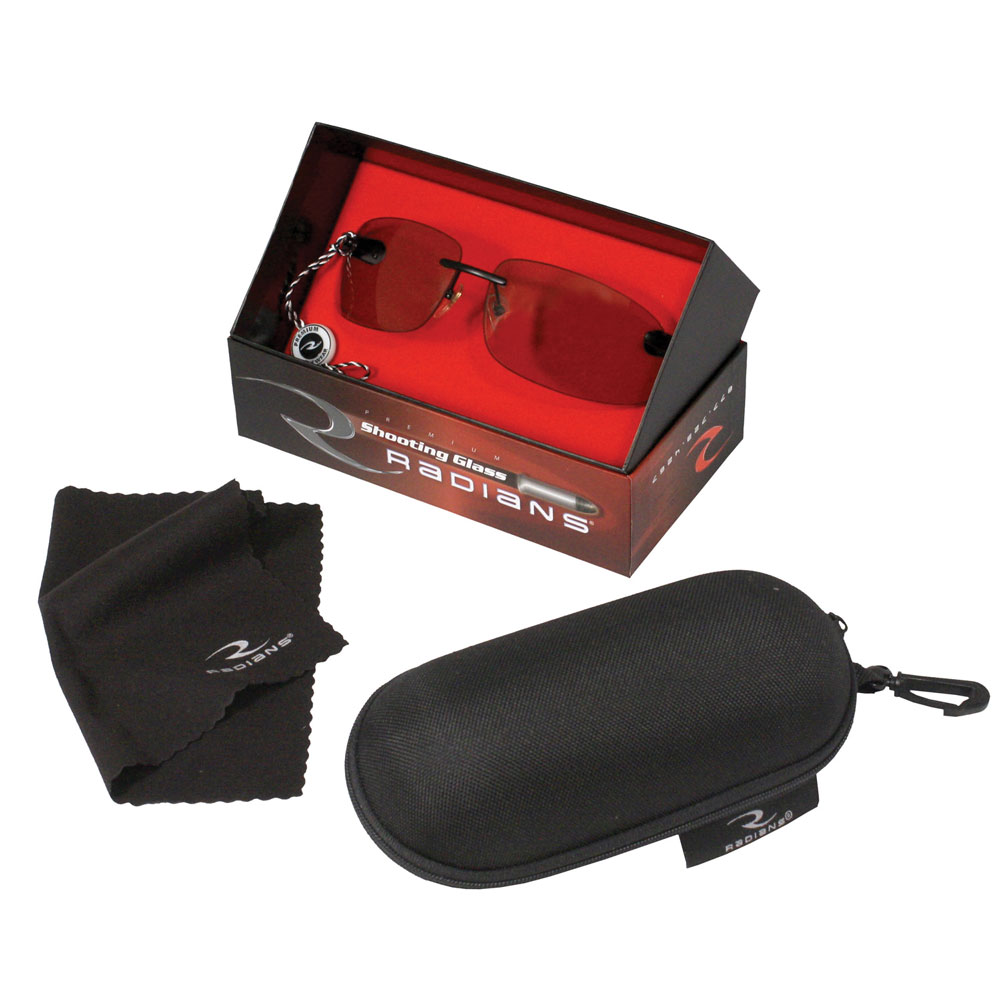 Eyewear Adapts to Changing Sunlight
Eyewear Adapts to Changing Sunlight
To counteract light and UV ray fluctuations in any shooting environment, the Radians “Eclipse” “photochromic” eyewear is engineered to darken in bright sunlight and lighten in dimmer conditions. The shooting glasses are tested to exceed the ANSI Z87.1 High Impact standard, and showcase scratch- and impact-resistant, hard-coat polycarbonate lenses that filter out harmful UV rays. The Eclipse glasses also include aluminum alloy temples, a sleek frameless design, an adjustable nosepiece, three lens color choices of copper, amber and green, a black protective carry case with belt clip, micro-fiber cleaning cloth and neck cords. ($89.99; radians.com)
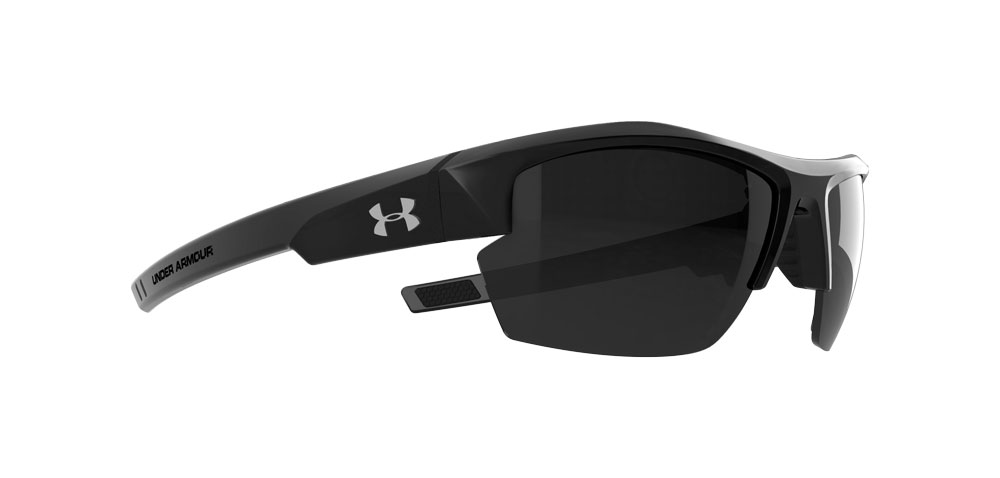 Cushioned Hinge Impact Zones
Cushioned Hinge Impact Zones
Not only is Under Armour TAC Igniter Eyewear ballistic rated to pass the ANSI Z87.1 High Impact standard, but it also features cushioned hinge impact zones to absorb shock and ensure a custom fit. A lightweight frame is matched with a choice of satin-black or gray polycarbonate ArmourSight lenses that offer 20 percent enhanced vision edge-to-edge, and are up to 10 times stronger than typical polycarbonate lenses, protecting against scratches and smudges. Igniter Eyewear comes with its own hard protective case. ($89.99; underarmour.com)